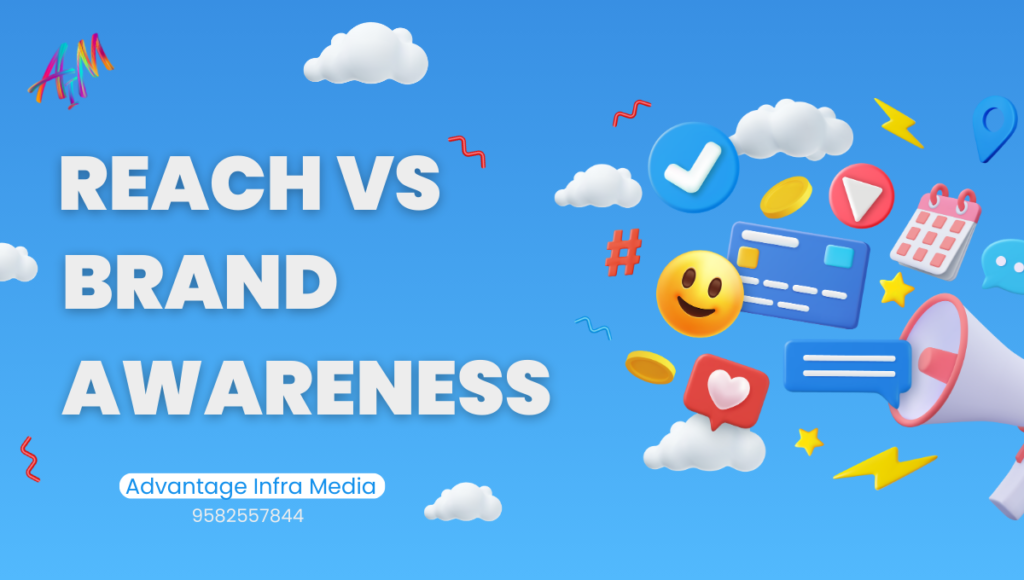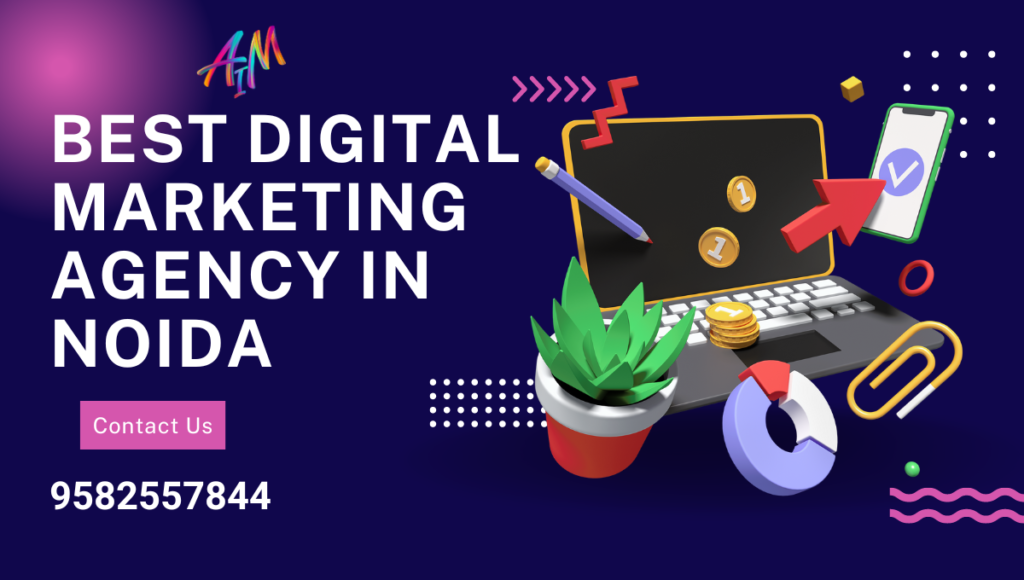Brand Awareness and Reach: What’s the Difference in 2024
In the world of digital marketing, two terms often surface: brand awareness and reach. While they may seem similar, they have distinct roles and impacts on a marketing strategy. Understanding the difference between brand awareness and reach is crucial for creating effective campaigns and achieving marketing objectives. This blog will delve into the definitions, differences, and the importance of each concept, providing a comprehensive guide to help you leverage both in your marketing efforts. (Brand Awareness and Reach: What’s the Difference)
Understanding Brand Awareness
Definition:
Brand awareness refers to the extent to which consumers recognize and remember a brand. It is about making your brand a familiar name to your target audience and ensuring they can recall your brand when they need a product or service you offer.
Components:
- Brand Recognition: This is the ability of consumers to identify your brand through visual or auditory cues such as logos, slogans, packaging, or advertising jingles.
- Brand Recall: This goes a step further than recognition. It’s when consumers can remember your brand without any visual or auditory prompts. For instance, when asked about a category like soft drinks, if they think of Coca-Cola, that’s brand recall.
Importance of Brand Awareness:
- Consumer Trust and Loyalty: High brand awareness creates a sense of familiarity and trust among consumers. They are more likely to choose a brand they recognize and trust over an unknown one.
- Competitive Advantage: In crowded markets, strong brand awareness can set your brand apart from competitors. It helps in making your brand the first choice for consumers.
- Foundation for Marketing Efforts: Effective brand awareness campaigns can drive other marketing efforts like lead generation, conversions, and customer retention.
How do companies create brand awareness?
Creating brand awareness is crucial for companies to establish their presence in the market and connect with their target audience. Here are several strategies that companies commonly use to create and enhance brand awareness:
1. Content Marketing
- Blogging: Writing informative and engaging blog posts related to the industry.
- Infographics: Creating visually appealing and shareable infographics.
- Videos: Producing high-quality videos that tell the brand’s story or provide valuable information.
2. Social Media Marketing
- Regular Posting: Consistently posting content that resonates with the target audience.
- Engagement: Interacting with followers through comments, messages, and live sessions.
- Influencer Collaborations: Partnering with influencers who can promote the brand to their followers.
3. Search Engine Optimization (SEO)
- Keyword Research: Identifying and using keywords that potential customers are searching for.
- On-Page SEO: Optimizing website content, meta tags, and images for search engines.
- Backlink Building: Acquiring backlinks from reputable sites to improve search engine ranking.
4. Paid Advertising
- PPC Campaigns: Running pay-per-click ads on platforms like Google Ads.
- Social Media Ads: Utilizing paid ads on social media platforms like Facebook, Instagram, and LinkedIn.
- Display Ads: Using banner ads on relevant websites and blogs.
5. Public Relations
- Press Releases: Distributing press releases to announce new products, events, or milestones.
- Media Coverage: Getting featured in news articles, magazines, and industry blogs.
- Event Sponsorship: Sponsoring events to get the brand in front of a larger audience.
6. Email Marketing
- Newsletters: Sending regular newsletters with valuable content and updates.
- Personalized Emails: Using personalized email campaigns to connect with subscribers.
- Lead Magnets: Offering free resources like eBooks or whitepapers in exchange for email sign-ups.
7. Partnerships and Collaborations
- Co-Branding: Partnering with other brands to create a product or campaign.
- Joint Ventures: Collaborating with other companies on projects or initiatives.
- Affiliate Programs: Creating an affiliate program to incentivize others to promote the brand.
8. Experiential Marketing
- Pop-Up Shops: Setting up temporary retail locations to create a buzz.
- Events and Workshops: Hosting events or workshops that provide value to attendees.
- Product Sampling: Offering free samples to let potential customers try the product.
9. Community Involvement
- Sponsoring Local Events: Supporting local events and causes to build a positive reputation.
- Corporate Social Responsibility (CSR): Engaging in CSR activities to show the brand’s commitment to social causes.
- Volunteering: Encouraging employees to volunteer and participate in community activities.
10. Innovative Product Packaging
- Eye-Catching Design: Creating unique and attractive product packaging.
- Sustainable Packaging: Using eco-friendly packaging materials to appeal to environmentally conscious consumers.
- Informative Packaging: Including detailed information about the product and brand on the packaging.
11. Customer Experience
- Exceptional Service: Providing outstanding customer service to create positive word-of-mouth.
- Loyalty Programs: Implementing loyalty programs to encourage repeat business.
- User-Generated Content: Encouraging customers to share their experiences and content featuring the brand.
12. Interactive Content
- Quizzes and Surveys: Creating engaging quizzes and surveys to interact with the audience.
- Contests and Giveaways: Running contests and giveaways to generate excitement and participation.
- Live Streams: Hosting live streams to connect with the audience in real-time.
By implementing a combination of these strategies, companies can effectively create and boost brand awareness, ultimately leading to increased recognition, customer loyalty, and business growth.
Understanding Reach
Definition:
Reach refers to the total number of unique individuals who see your content or advertisement. It’s a metric that tells you how many people have been exposed to your marketing message. (Brand Awareness and Reach: What’s the Difference)
Components:
- Organic Reach: This is the number of unique individuals who see your content through non-paid distribution, such as posts on your social media pages or blog articles.
- Paid Reach: This includes individuals who see your content as a result of paid promotions, such as social media ads, Google Ads, or other forms of paid media.
Importance of Reach:
- Audience Size: Reach gives you an idea of how large your audience is. A higher reach means more people are exposed to your brand and its messages.
- Content Performance: It helps in evaluating the performance of your content. If a piece of content has a high reach, it indicates that it has been widely seen and potentially shared.
- Campaign Effectiveness: In paid campaigns, reach is a critical metric to understand the effectiveness of your spending. It ensures that your ads are being shown to a large audience.
How do companies optimize their reach?
Key Differences Between Brand Awareness and Reach
- Objective:
- Brand Awareness: The goal is to ensure that consumers recognize and remember your brand.
- Reach: The aim is to expose as many unique individuals as possible to your content or advertisement.
- Measurement:
- Brand Awareness: Measured through surveys, brand recall tests, social listening tools, and brand tracking studies.
- Reach: Measured through analytics tools that track how many unique users have seen your content or ads.
- Impact on Marketing Strategy:
- Brand Awareness: Builds long-term consumer relationships and loyalty. It’s a gradual process that involves consistent and strategic branding efforts.
- Reach: Provides immediate data on how many people have been exposed to your content. It’s more about the breadth of your message distribution.
Strategies to Enhance Brand Awareness
- Consistent Branding:
- Use consistent logos, colors, and messaging across all marketing channels to create a recognizable brand image.
- Content Marketing:
- Create valuable, informative, and engaging content that resonates with your target audience. This includes blog posts, videos, infographics, and social media updates.
- Influencer Partnerships:
- Collaborate with influencers who can introduce your brand to their followers, thereby increasing your brand’s visibility.
- Social Media Engagement:
- Actively engage with your audience on social media platforms. Respond to comments, participate in discussions, and run contests or giveaways.
- Public Relations:
- Leverage PR strategies to get media coverage for your brand. This includes press releases, events, and partnerships with media outlets.
Strategies to Maximize Reach
- Targeted Advertising:
- Use platforms like Facebook Ads, Google Ads, and LinkedIn Ads to target specific demographics and expand your reach to a broader audience.
- SEO Optimization:
- Optimize your website and content for search engines to improve organic reach. Use relevant keywords, meta tags, and high-quality backlinks.
- Email Marketing:
- Build and maintain a strong email list. Send regular newsletters and promotional emails to keep your audience engaged.
- Social Media Ads:
- Invest in social media advertising to increase your reach. Platforms like Facebook, Instagram, and Twitter offer robust ad targeting options.
- Collaborations and Partnerships:
- Partner with other brands, businesses, or influencers to cross-promote and reach a wider audience.
Case Study: Coca-Cola
Brand Awareness: Coca-Cola is a prime example of strong brand awareness. Through consistent branding, memorable advertising campaigns, and strategic partnerships, Coca-Cola has become a household name. Their logo, colors, and jingles are instantly recognizable worldwide. (Brand Awareness and Reach: What’s the Difference)
Reach: Coca-Cola also excels in maximizing reach. Through extensive advertising across various channels—TV, social media, outdoor billboards—they ensure that their content reaches a vast audience. Their global campaigns are designed to reach diverse demographics across different regions.
Measuring Success: Brand Awareness vs. Reach
Brand Awareness Metrics:
- Brand Recall and Recognition: Conduct surveys to assess how well consumers remember and recognize your brand.
- Social Media Mentions: Use social listening tools to track mentions and discussions about your brand on social media.
- Website Traffic: Monitor the number of direct visitors to your website, which can indicate brand familiarity.
Reach Metrics:
- Impressions: Track the number of times your content is displayed, regardless of clicks.
- Unique Users: Measure the number of unique individuals who have seen your content or ads.
- Engagement Rates: Monitor likes, shares, comments, and other forms of engagement to gauge the effectiveness of your reach.
Balancing Brand Awareness and Reach
While both brand awareness and reach are essential, they serve different purposes and should be balanced in your marketing strategy. Focusing solely on reach might result in high visibility but low brand recall. Conversely, prioritizing only brand awareness might limit the size of your audience.
Integrated Approach:
- Simultaneous Campaigns: Run brand awareness and reach campaigns concurrently. Use content marketing and SEO to build brand awareness while leveraging paid ads to maximize reach.
- Data-Driven Decisions: Use data analytics to measure the impact of both brand awareness and reach efforts. Adjust your strategy based on the performance metrics.
Example: A new tech startup can use social media ads to reach a large audience and drive traffic to their website (reach). Simultaneously, they can create informative blog posts and engage with their audience on social media to build brand awareness.
Conclusion
Brand awareness and reach are both critical components of a successful marketing strategy, but they serve different purposes. Brand awareness focuses on making your brand recognizable and memorable, fostering trust and loyalty among consumers. Reach, on the other hand, is about maximizing the number of unique individuals exposed to your content. (Brand Awareness and Reach: What’s the Difference)
By understanding the differences between brand awareness and reach, and implementing strategies to enhance both, you can create a balanced marketing approach that drives immediate visibility and long-term brand loyalty. Leveraging these concepts effectively will help you achieve your marketing goals and stand out in a competitive market.




